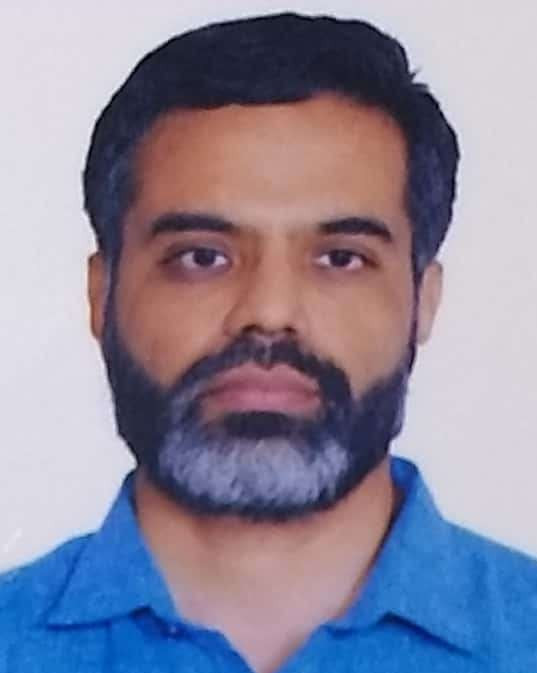God’s Own Kitchen – The Inspiring Story of Akshaya Patra
- In Book Reviews
- 01:01 PM, Oct 03, 2021
- Venkatesh Kikkeri
“Why don’t you start a mid-day meal program, Swamiji? Feeding a child, Swamiji, is not charity. It is our collective duty” suggested Mohandas Pai, former Chief Financial Officer of Infosys Limited, to Swami Madhu Pandit Dasa, President, ISKCON, Bangalore who also designed the ISKCON Temple complex on Hare Krishna Hill, West of Chord Road, Bangalore. This inspired Swami Madhu Pandit Dasa, who left IIT to become a monk, to use the spare capacity in the ISKCON kitchen to start a mid-day meal program for 1500 Government school students during July 2000 and led to the formation of what is now known as the Akshaya Patra Foundation.
For the starters Akshaya Patra led mid-day meal program is the world’s largest NGO-led mid-day meal program. As at the time of writing this review Akshaya Patra had served a mind boggling 3.5 billion mid-day meals since the day it was established.
The book, God’s Own Kitchen – The Inspiring Story of Akshaya Patra – a social enterprise run by monks and CEOs, authored by Rashmi Bansal breezily narrates the story of Akshaya Patra from its inception, its successes, failures (very few though) and its journey in becoming the world’s largest NGO which is satisfying the hunger, the first basic necessity for any human being, of many a poor children thereby paving a way for their education.
Bansal’s book is a Gita on Akshaya Patra Foundation. Organised into three adhyayas (sections) aptly named Bhakti Yoga, Karma Yoga and Jnana Yoga, the author progressively narrates the story of Akshaya Patra in several chapters, with the chapter titled relevantly in Sanskrit. The author provides an insight into how Akshaya Patra turned out to be a world class ‘enterprise’, on par with any of the top 100 world class companies. Though an NGO, Akshya Patra is a thoroughly professional organisation known for its transparency, financial management, quality and professional CEO driven culture.
The book is an inspiration for many a reader as well as professionals and entrepreneurs for it narrates the innovative ways that Akshaya Patra charted out itself to be on top, serving the humanity uninterrupted despite many tough challenges. The author’s simple but effective way of narrating the events retains the curiosity of the reader as well as providing the reader with some hitherto unknown facts and interesting statistics.
To read about a journey which started from studying the kitchen at Manjunatha Swamy Temple, Dharmasthala, Karnataka, as a benchmark and which moved upto Tetra Pak plant in Sweden is delightful, thanks to the author. This journey has so far contributed 58 kitchens across India (27 kitchens at the time of publishing of the book) covering 13 States and 1 Union Territory of India. Each kitchen has had to face its own challenges to negotiate whether it is Government approvals, infrastructure scalability or the menu itself. The author has done commendable ground work to narrate the story of how some of the kitchens of Akshaya Patra were established.
The book offers deep insights into how Akshaya Patra despite being a NGO, adopted corporate practices to successfully achieve spiritual and social objectives. The approach taken by Akshaya Patra in managing crisis, achieving financial self sufficiency at each of their kitchens (you also get to know indicators like lowest cost per meal, chappatis/rotis per hour or kgs of rice per day and how these were optimised!), practicing high ethical standards and governance, innovative and out of the box measures adopted to achieve the objectives, the donor reach (be it individuals, institutions, corporates or business communities) etc are some of the interesting upakatha (episodes) in the successful story of Akshaya Patra, which the reader gets to understand, thanks to the brilliant narration by the author.
Reading this book one also gets to know the neglect various Governments have towards achieving the objective of eradicating hunger and many a schemes remains only on paper and are just a money making mechanism for the elected representatives. If it be challenged various roadblocks are created. Kudos to Akshaya Patra for successfully clearing all such roadblocks! One also can conclude that in achieving primary social objectives it is always a public-private partnership that will be successful.
This book is about a truly Made in India success story. Wish Akshaya Patra Foundation continues to be on the path of success. Failure to eradicate hunger in children will also lead to a failure in achieving other social objectives. The success of Akshaya Patra will be a stepping stone for the achievement of many other social objectives and also serves as a benchmark for many such organisations. It is not only the responsibility of us to contribute to this success, but as suggested by Mohandas Pai, it our collective duty too.
Appreciate the author Rashmi Bansal for this inspiring book.
Image source: Akshyapatra blog
Disclaimer: The opinions expressed within this article are the personal opinions of the author. MyIndMakers is not responsible for the accuracy, completeness, suitability, or validity of any information on this article. All information is provided on an as-is basis. The information, facts or opinions appearing in the article do not reflect the views of MyindMakers and it does not assume any responsibility or liability for the same.







Comments